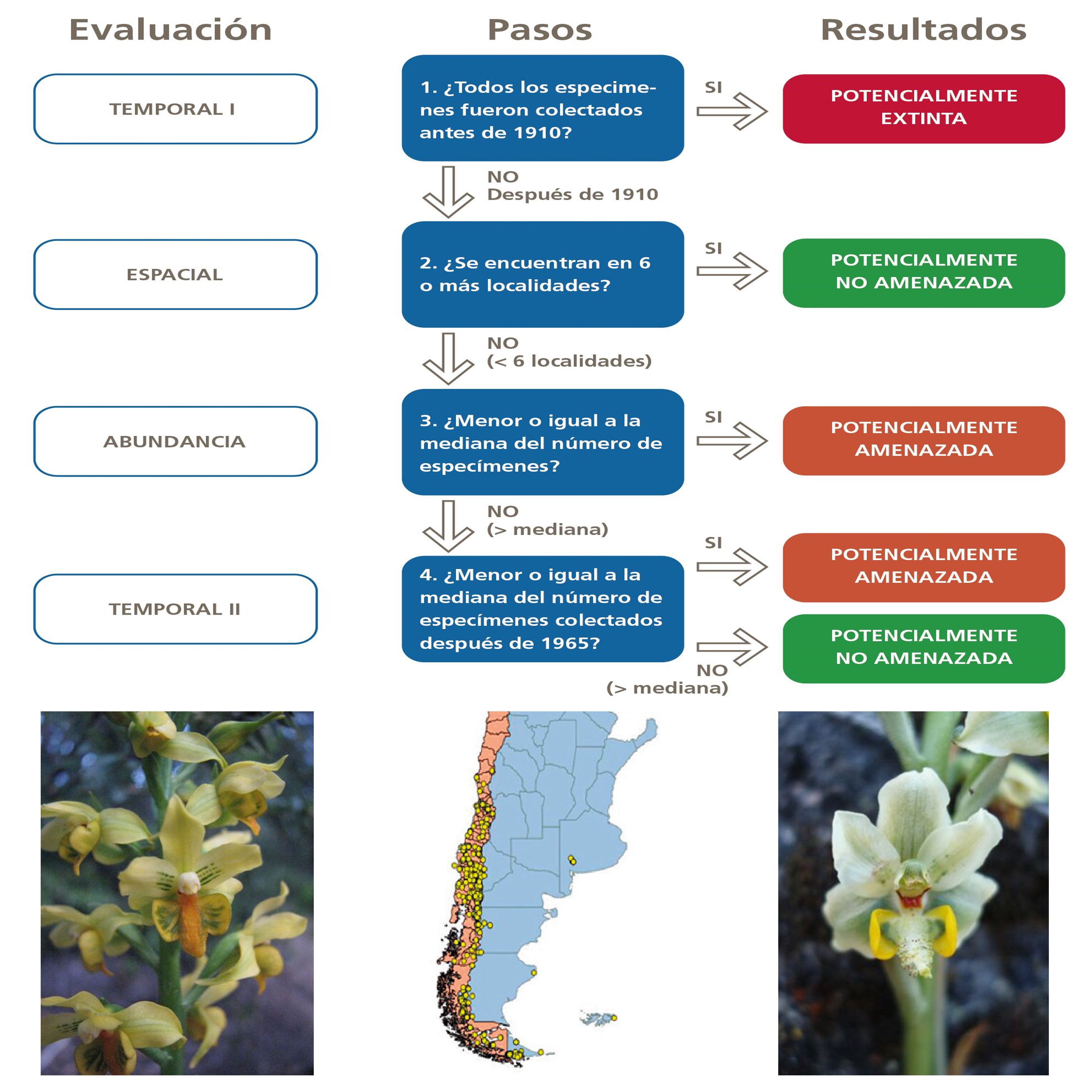Preliminary conservation status of plants: comparison of two methods applied to the genus Gavilea (Orchidaceae)
DOI:
https://doi.org/10.31055/1851.2372.v54.n3.25362Keywords:
conservation status, expert evaluation, Gavilea, herbarium records, IUCN.Abstract
Background and aims: It is essential to know the conservation status of the species, in order to prioritize intervention and management of the most threatened species populations. Usually available information is not enough for a definitive evaluation; therefore, it is important to develop rapid assessment methods of conservation status. In this work we performed a preliminary assessment of the conservation status for the Patagonian orchid genus Gavilea (Orchidaceae, Chloraeinae), and we compared our results with that obtained by experts.
M&M: We compiled a database with location and date of collection date of herbarium specimens of the 17 species of Gavilea. We apply an adaptation of the criteria proposed by Krupnik et al., (2009) related to the geographical and temporal distribution of the collections. We compare the classification obtained with those published by experts.
Results: We categorize the 17 species, with 1 Potentially Extinct species, 6 Potentially Threatened species and the remaining 10 Potentially Not Threatened species. In addition, we found that 15 of the 17 species coincide in their classification with the evaluation of experts; only for G. platyantha, our categorization was more optimistic than that of experts.
Conclusions: The method allowed to categorize all the species and determine the priorities for future studies or interventions. In most cases, the categorization coincided with that carried out by experts. In general, we consider that the method is a good tool to generate an assessment of the preliminary conservation status of plant species.

Downloads
Published
Issue
Section
License
Provides immediate and free OPEN ACCESS to its content under the principle of making research freely available to the public, which fosters a greater exchange of global knowledge, allowing authors to maintain their copyright without restrictions.
Material published in Bol. Soc. Argent. Bot. is distributed under a Creative Commons Attribution-NonCommercial-ShareAlike 4.0 International license.




